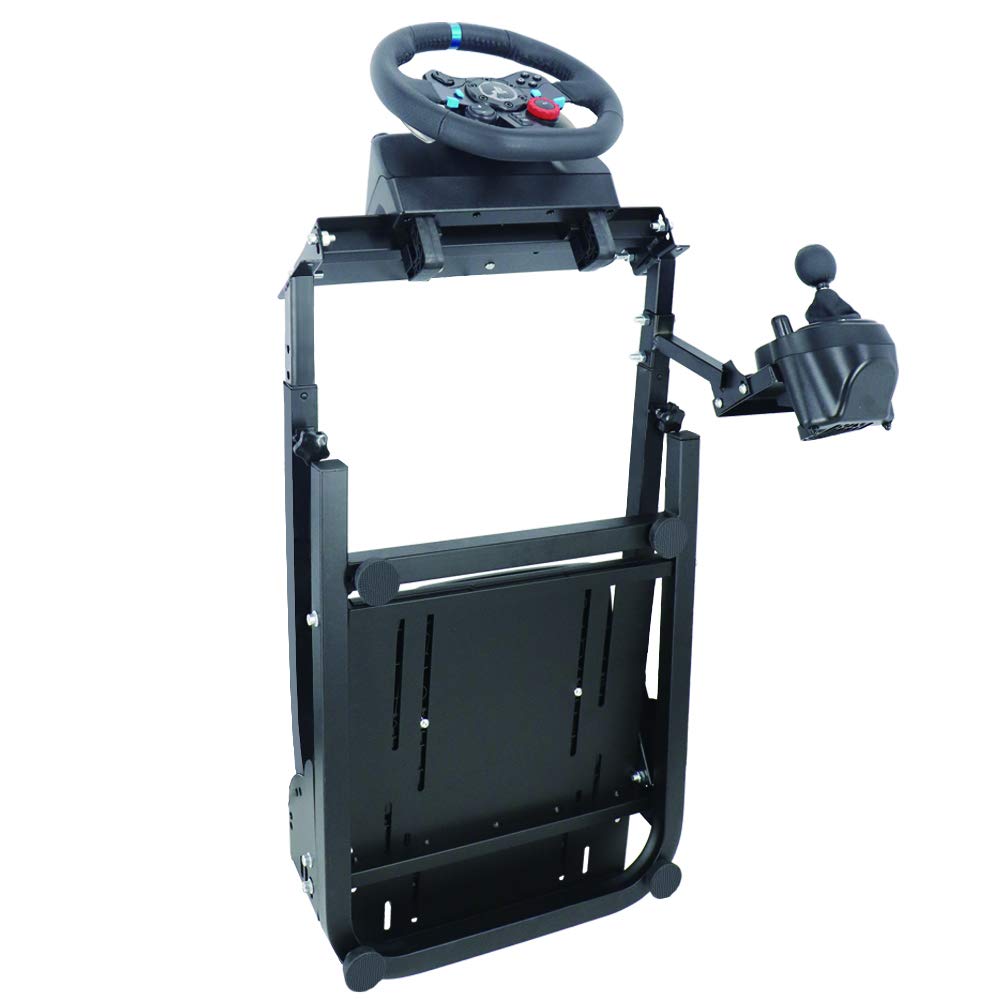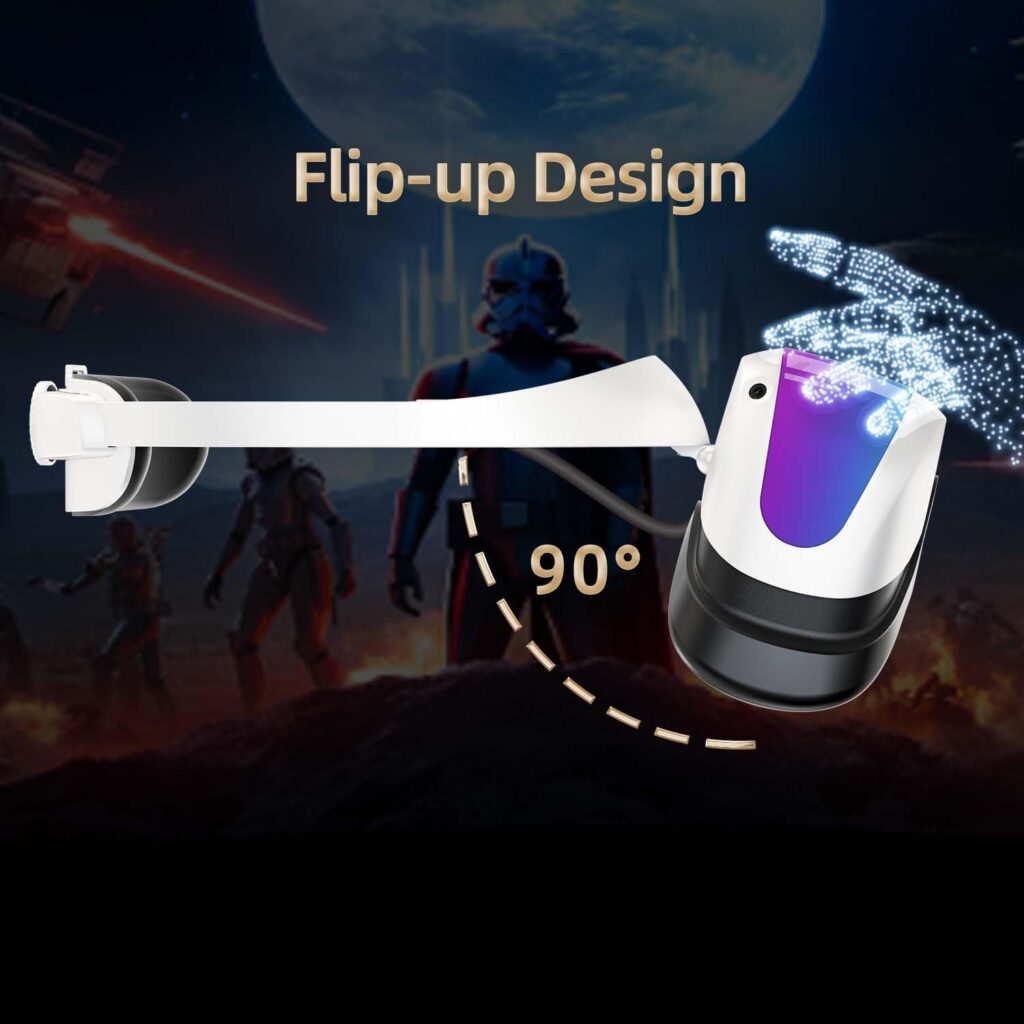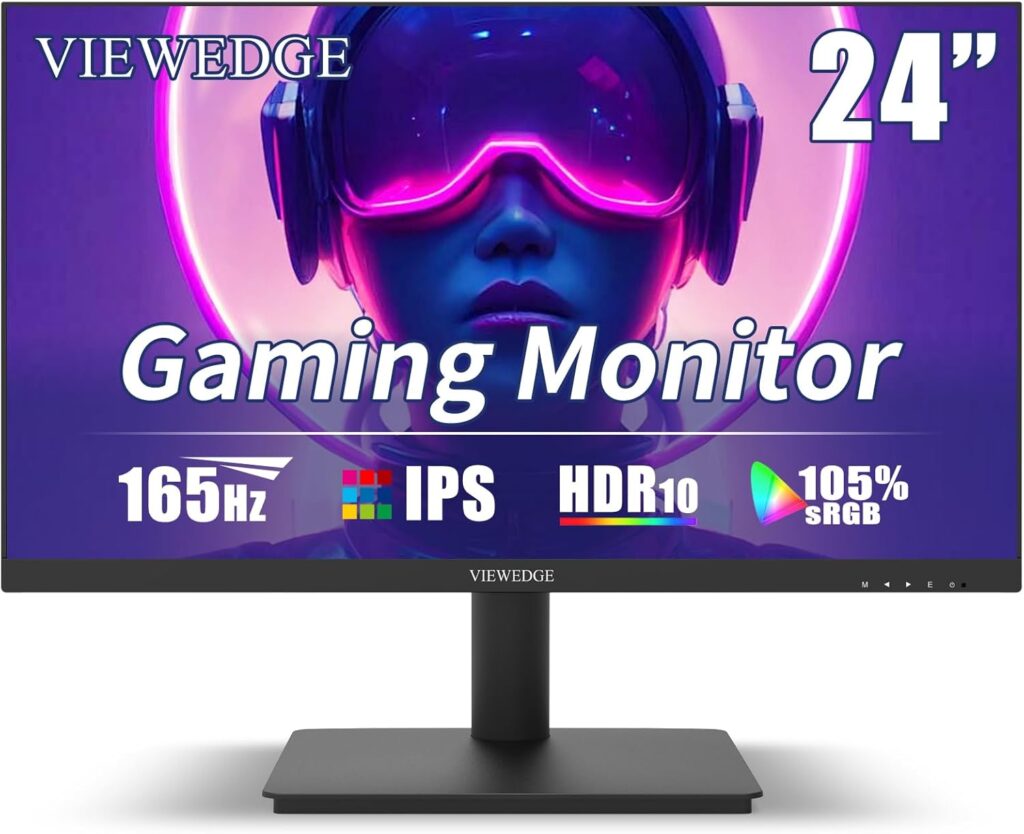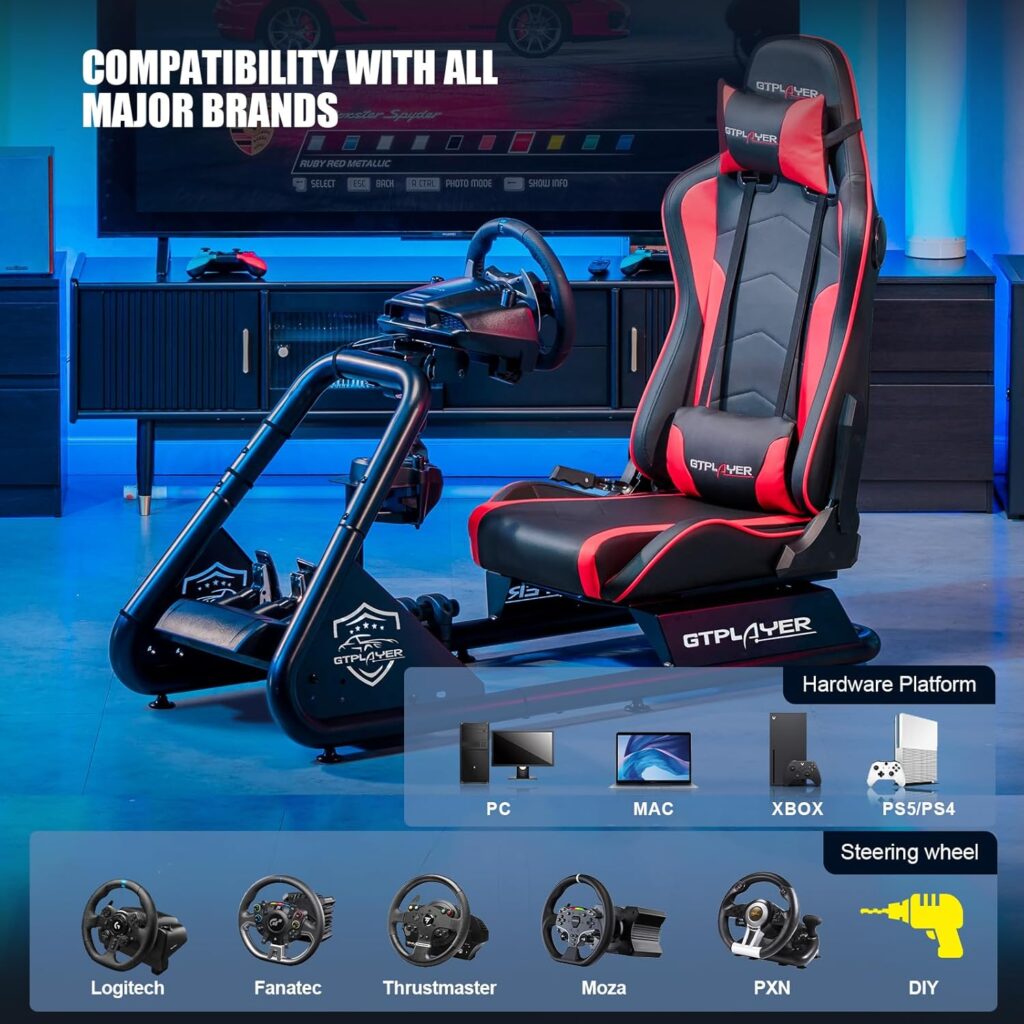You love the thrill of race car driving, but don’t have the means or opportunity to jump into a real race car. That’s where sim racing comes in, offering a virtual experience that can be just as exhilarating. But with the rise of virtual reality (VR) technology, the question arises: are VR headsets necessary for a truly realistic sim racing experience? Many argue that the immersion and sensory feedback provided by VR headsets can take your racing experience to a whole new level. However, others believe that traditional setups can still deliver a realistic experience without the need for expensive VR equipment. Let’s explore both sides of the argument to see if VR headsets are indeed necessary for a truly authentic sim racing experience.
Advantages of VR headsets in sim racing
Immersive experience
One of the major advantages of using VR headsets in sim racing is the immersive experience it provides. By wearing a VR headset, you are transported into a virtual world where you feel like you are sitting inside the cockpit of a race car. The 3D visuals, combined with the spatial audio, create a sense of presence that is unmatched by other gaming setups.
Enhanced depth perception
Another benefit of VR headsets in sim racing is the enhanced depth perception it offers. With a VR headset, you can accurately judge distances and positions of objects in the virtual world, just like in real life. This helps you make better decisions on the track, such as when to brake or overtake, resulting in improved performance.
Improved situational awareness
VR headsets also improve situational awareness in sim racing. By providing a 360-degree view of the virtual environment, VR headsets allow you to spot other cars, obstacles, and track conditions more easily. This increased awareness helps you anticipate and react to situations quickly, giving you an edge over your opponents.
Realistic head movement
VR headsets track your head movements in real-time, allowing you to look around the virtual world just as you would in a real car. As you turn your head, the view in the VR headset changes accordingly, making the experience much more natural and immersive. This realistic head movement adds to the overall authenticity of the sim racing experience.
Increased focus and concentration
Using VR headsets in sim racing can also lead to increased focus and concentration. When you are fully immersed in the virtual world, with distractions minimized, it becomes easier to zone in on the race and stay in a state of flow. This heightened focus helps improve reaction times and overall performance on the track.
Limitations of VR headsets in sim racing
Motion sickness
One of the main limitations of VR headsets in sim racing is the potential for motion sickness. The intense visuals and head movements that come with VR can cause some individuals to feel nauseous or dizzy. This can be particularly challenging during long gaming sessions or when driving in high-speed races. However, it’s important to note that not everyone experiences motion sickness, and some individuals can gradually build up a tolerance to it over time.
Discomfort and fatigue
Wearing a VR headset for an extended period of time can also lead to discomfort and fatigue. The weight of the headset and the pressure it puts on your face can cause discomfort, especially when combined with the physical exertion of sim racing. Additionally, the limited airflow around the face may make some users feel hot and sweaty. Taking regular breaks and adjusting the headset for a comfortable fit can help alleviate these issues.
Limited field of view
VR headsets typically have a limited field of view compared to other gaming setups. While the virtual world may feel immersive, your peripheral vision is somewhat restricted, which can affect your situational awareness on the track. However, this limitation can be mitigated by adjusting the headset properly and using strategies such as regularly scanning the environment with head movements.
Lower visual resolution
Another limitation of VR headsets in sim racing is the lower visual resolution compared to traditional monitors. While the immersion and depth perception are impressive, the pixel density of VR displays may not be as sharp as high-end monitors. This can impact the clarity of distant objects and fine details in the virtual environment. However, as VR technology continues to advance, improvements in visual resolution are expected in the future.
Higher cost and setup requirements
VR headsets can be quite expensive, especially when compared to other gaming setups. The cost of a high-quality VR headset, along with the necessary computer hardware to power it, can be prohibitive for some sim racing enthusiasts. Additionally, setting up and configuring VR headsets may require additional time and technical expertise. However, the investment can be worthwhile for those seeking the most immersive and realistic sim racing experience.
Alternative options to VR headsets
Multiple monitor setup
One alternative to VR headsets in sim racing is using a multiple monitor setup. By connecting two or more monitors to your racing rig, you can enjoy a wider field of view and increased situational awareness. This setup allows you to see more of the virtual environment without the limitations of a single monitor or VR headset. However, it is important to ensure proper alignment and calibration of the monitors to avoid distortion and create a seamless display.
Ultra-wide screen monitors
Ultra-wide screen monitors are another option for sim racing enthusiasts who prefer a wider field of view. These monitors provide an extended aspect ratio, allowing you to see more of the track and surroundings without the hassle of setting up multiple monitors. The increased screen real estate provides a more immersive experience compared to standard monitors, although it may not match the level of immersion offered by VR headsets.
Head tracking devices
Head tracking devices, such as TrackIR or Tobii Eye Tracker, can be used to enhance the realism of sim racing. These devices track your head movements and adjust the in-game camera accordingly, allowing you to look around the virtual environment with greater freedom. While they don’t provide the same level of immersion as VR headsets, head tracking devices offer a more affordable and accessible option for sim racers looking to enhance their experience.
Seat motion simulators
seat motion simulators add a physical element to sim racing, enhancing the sense of realism and immersion. These devices move and vibrate the racing seat in sync with the in-game events, such as acceleration, braking, and cornering forces. By simulating the physical sensations of driving a race car, seat motion simulators can elevate the overall experience, although they do not provide the same visual immersion as VR headsets.
Force feedback steering wheels
force feedback steering wheels are a common accessory in sim racing setups, regardless of whether VR is used. These wheels provide realistic resistance and feedback during steering, replicating the forces experienced while driving a real car. While force feedback steering wheels do not directly replace the visual immersion of VR headsets, they significantly contribute to the realism and control of the sim racing experience.
Comparing VR headsets versus alternative options
Realism and immersion
VR headsets offer the highest level of realism and immersion in sim racing. The 3D visuals, spatial audio, and head tracking create a truly immersive experience that closely replicates real-world racing. Alternative options such as multiple monitors or ultra-wide screen monitors can provide a wider field of view but may lack the depth and presence offered by VR headsets. Head tracking devices, seat motion simulators, and force feedback steering wheels enhance different aspects of realism but may not match the overall immersion of VR.
Cost-effectiveness
When it comes to cost-effectiveness, alternative options such as multiple monitors, ultra-wide screen monitors, and head tracking devices are generally more affordable compared to VR headsets. While the initial investment for VR headsets, including the required computer hardware, is higher, they offer a more comprehensive and immersive experience. Sim racers should consider their budget and priorities when deciding between different options.
Physical comfort
In terms of physical comfort, VR headsets may cause discomfort and fatigue due to the weight, pressure, and limited airflow. Alternative options such as multiple monitors, ultra-wide screen monitors, and head tracking devices generally offer a more comfortable experience. Seat motion simulators provide physical feedback but may also contribute to discomfort if not properly adjusted. Force feedback steering wheels are generally comfortable to use and may offer a more ergonomic racing position.
Convenience and ease of use
VR headsets require a more complex setup process and may have higher technical requirements compared to alternative options. Multiple monitors and ultra-wide screen monitors are relatively easy to set up and require minimal technical knowledge. Head tracking devices usually require software installation and calibration but are generally user-friendly. Seat motion simulators may require more adjustments and fine-tuning but can still be relatively straightforward. Force feedback steering wheels are plug-and-play devices that are easy to use.
Compatibility with other games and applications
While VR headsets provide an immersive experience specifically designed for sim racing, they may not be as versatile compared to other gaming setups in terms of compatibility with various games and applications. Multiple monitors, ultra-wide screen monitors, and head tracking devices can be used for a wide range of games and applications beyond sim racing. Seat motion simulators and force feedback steering wheels can enhance the realism and control in many racing and driving games.
Effect of VR on sim racing performance
Improved lap times and race consistency
The use of VR headsets in sim racing can lead to improved lap times and race consistency. The enhanced depth perception, improved situational awareness, and realistic head movement allow drivers to make better judgments and react quickly to on-track situations. By accurately perceiving distances and positions of objects, drivers can brake later, take tighter lines, and maintain better control of their race car, ultimately leading to faster lap times and more consistent performance.
Better vehicle control and accuracy
VR headsets provide a heightened sense of control and accuracy in sim racing. The realistic head movements and the ability to look into corners and track apexes naturally aid in controlling the race car. The increased focus and concentration resulting from immersion also contribute to precise steering inputs and smoother driving. This level of control translates into better racecraft and improved overall performance on the track.
Increased driver confidence
The immersive nature of VR headsets can greatly boost driver confidence in sim racing. By giving the sensation of sitting inside a race car, VR headsets help eliminate the disconnect between the virtual world and the driver. This sense of presence and engagement instills confidence in the driver’s abilities, allowing them to push their limits and explore the full potential of their race car. The increased driver confidence leads to more aggressive but calculated driving, resulting in improved performance and race outcomes.
Training benefits for real-world racing
Using VR headsets in sim racing not only enhances performance in the virtual world but also has training benefits for real-world racing. The skills and techniques developed in sim racing, facilitated by the immersion and realism of VR, can be directly transferable to real-life race driving. Professional racing drivers and racing enthusiasts alike can use sim racing with VR headsets as a training tool to practice race lines, develop racecraft, and improve overall driving skills in a safe and controlled environment.
The psychological impact of VR in sim racing
Sense of presence and engagement
VR headsets create a strong sense of presence and engagement in sim racing. The feeling of being fully immersed in the virtual world, surrounded by the sights and sounds of a race car, can be incredibly captivating. The heightened level of engagement intensifies the overall experience, making it feel more real and impactful. This sense of presence enhances the emotional connection with the racing experience, leading to a more immersive and enjoyable sim racing session.
Emotional intensity and adrenaline rush
Sim racing with VR headsets can evoke intense emotions and adrenaline rush similar to real-world racing. The combination of realistic visuals, spatial audio, and physical feedback from force feedback steering wheels or seat motion simulators creates a thrilling and immersive experience. The heightened emotional intensity adds an extra layer of excitement and immersion to the simulation, making it a truly immersive and adrenaline-pumping experience.
Overcoming fear and building resilience
VR headsets can help sim racers overcome fear and build resilience. By simulating the high speeds, close racing, and potential crashes of real-world racing, VR headsets expose drivers to scenarios that may trigger fear or anxiety. With repeated exposure, drivers can gradually acclimate to these intense situations, developing mental resilience and the ability to maintain composure under pressure. This psychological training can be valuable not only for sim racing but also for real-world racing, where the ability to manage fear and stay focused is crucial.
Potential negative effects on mental health
While sim racing with VR headsets can be an enjoyable and immersive experience, it is important to consider the potential negative effects on mental health. Spending excessive time in virtual environments with intense stimuli may lead to feelings of isolation, detachment from reality, or addiction-like behaviors. It is essential to maintain a healthy balance between virtual and real-life activities, take regular breaks, and prioritize mental well-being when engaging in sim racing with VR headsets.
User preferences and subjective experiences
Personal preferences for realism or convenience
Sim racing enthusiasts have different preferences when it comes to the trade-off between realism and convenience. Some may prioritize the highest level of immersion and opt for VR headsets despite the drawbacks of motion sickness and discomfort. Others may prefer the convenience and ease of use offered by alternative options such as multiple monitors or head tracking devices. Ultimately, the choice between VR headsets and alternative options depends on individual preferences and priorities.
Individual tolerance to motion sickness
Motion sickness is a significant consideration when using VR headsets in sim racing. While some individuals have high tolerance and can adapt to VR motion without issues, others may experience discomfort and nausea. It is important to assess your own tolerance to motion sickness and gradually increase exposure to VR to build up resistance. Adjusting the headset properly, taking breaks, and using techniques such as acclimation exercises or anti-motion sickness medications can also help mitigate motion sickness symptoms.
Opinions on visual quality and resolution
Opinions on visual quality and resolution in sim racing with VR headsets can vary. While the immersion and depth perception are highly regarded, some users may find the visual resolution to be lower compared to high-end monitors. The pixel density may affect the clarity of distant objects or fine details, such as trackside signage. However, advancements in VR technology are expected to address these concerns in the future, providing higher visual resolution and improved image quality.
Perception of comfort and fatigue levels
The comfort and fatigue levels associated with VR headsets can differ among individuals. While some may find the headset comfortable for extended periods, others may experience discomfort and fatigue due to the weight, pressure, and limited airflow. Adjusting the headset for a proper fit, taking regular breaks, and using alternate solutions such as cooling fans or foam replacements can help improve comfort levels. It is important to listen to your body and take necessary precautions to avoid excessive strain or discomfort.
Feedback from sim racing communities
Feedback from sim racing communities can provide valuable insights into the experiences and preferences of VR headsets in sim racing. Engaging in discussions, reading reviews, and seeking recommendations from experienced sim racers can help you make an informed decision. Sim racing communities often share personal experiences, tips, and suggestions regarding VR headsets, alternative options, and their impact on the overall sim racing experience.
Considerations for beginners in sim racing
Budget constraints for equipment
For beginners in sim racing, budget constraints may be a significant consideration. VR headsets, while offering the highest level of immersion, can be expensive, especially when considering the required computer hardware. On the other hand, alternative options such as multiple monitors, ultra-wide screen monitors, or head tracking devices can provide a more budget-friendly entry point into sim racing without sacrificing the enjoyment and realism.
Ease of setup and learning curve
Another consideration for beginners is the ease of setup and learning curve associated with different options. VR headsets generally require more technical setup and calibration compared to other gaming setups. Multiple monitors and ultra-wide screen monitors are relatively straightforward to install and configure. Head tracking devices, seat motion simulators, and force feedback steering wheels may require additional setup and adjustment, but they can still be learned and mastered with practice.
Balancing investment in sim racing gear
For beginners, it is important to balance the investment in sim racing gear with other priorities and interests. While VR headsets offer the most immersive experience, it may be more sensible to allocate a portion of the budget towards other essential peripherals such as a quality steering wheel, pedals, or a sturdy racing seat. Gradually upgrading to VR headsets or other alternative options can be a progressive approach as interest and budget permit.
Gradual progression towards VR setups
As beginners gain more experience and develop a deeper interest in sim racing, they may explore the possibility of upgrading to VR setups. Gradually progressing towards VR headsets allows beginners to experience the benefits of alternative options while saving up for a more comprehensive VR setup. This gradual approach not only offers the chance to acquire skills and knowledge in sim racing but also ensures that the choice of VR is well-informed and aligned with individual preferences.
Potential future advancements in VR technology
Improved visual resolution and clarity
One of the potential future advancements in VR technology is improved visual resolution and clarity. As VR technology continues to evolve, higher pixel density displays and improved image rendering techniques are expected to provide sharper, more detailed visuals. This advancement will enhance the realism and immersion of VR headsets in sim racing, addressing concerns about visual quality and resolution.
Wireless and standalone VR headsets
Wireless and standalone VR headsets are another exciting prospect for the future of sim racing. Currently, most VR headsets require cables and depend on a powerful computer to drive the simulation. Wireless and standalone VR headsets would eliminate the need for cables and offer greater freedom of movement, making the sim racing experience more convenient and immersive.
Haptic feedback integration
Haptic feedback integration in VR headsets is a potential advancement that can greatly enhance the sense of realism in sim racing. By incorporating haptic feedback technology, VR headsets can simulate the tactile sensations experienced during racing, such as vibrations, bumps, and G-forces. This would further immerse the user in the virtual environment and provide a more comprehensive sensory experience.
Eye tracking for enhanced realism
Eye tracking technology in VR headsets has the potential to improve realism and interaction in sim racing. By tracking eye movements, VR headsets can adjust the focus and depth of field within the virtual environment, replicating how the human eye naturally perceives the real world. This technology can enhance the sense of depth and realism, making the sim racing experience even more immersive.
Integration with augmented reality
The integration of augmented reality (AR) with VR technology is an exciting potential development for sim racing. Augmented reality overlays computer-generated objects onto the real world, enhancing the perception of the virtual environment. This integration could bring additional information, such as tire temperatures or track conditions, into the driver’s field of view, further enhancing the realism and practicality of sim racing.
Conclusion
When considering whether VR headsets are necessary for a realistic sim racing experience, it is essential to weigh the advantages and limitations of VR headsets against alternative options. VR headsets offer unparalleled levels of immersion, depth perception, and situational awareness, contributing to improved lap times, vehicle control, and driver confidence. However, they come with limitations such as motion sickness, discomfort, limited field of view, lower visual resolution, and higher cost and setup requirements. Alternative options, such as multiple monitors, head tracking devices, seat motion simulators, and force feedback steering wheels, provide varying degrees of realism and convenience.
The choice between VR headsets and alternative options ultimately depends on individual preferences, budget constraints, technical considerations, and the desired balance between realism and convenience. Considerations for beginners in sim racing include the initial investment, ease of setup, learning curve, and potential for future progression. The psychological impact of VR in sim racing can enhance the sense of presence and engagement, evoke intense emotions and adrenaline rush, and offer training benefits for real-world racing. However, it is important to be mindful of the potential negative effects on mental health and maintain a healthy balance between virtual and real-life activities.
User preferences, tolerance to motion sickness, opinions on visual quality, comfort and fatigue levels, and feedback from sim racing communities should be taken into account when considering different options. While VR headsets provide a highly immersive experience, alternative options can still offer enjoyable and realistic sim racing experiences. As VR technology continues to evolve, potential future advancements may include improved visual resolution, wireless and standalone VR headsets, haptic feedback integration, eye tracking, and integration with augmented reality. Evaluating these advancements in relation to individual preferences and priorities can help make informed decisions and strike an optimal balance between the pros and cons for a personalized sim racing experience.




